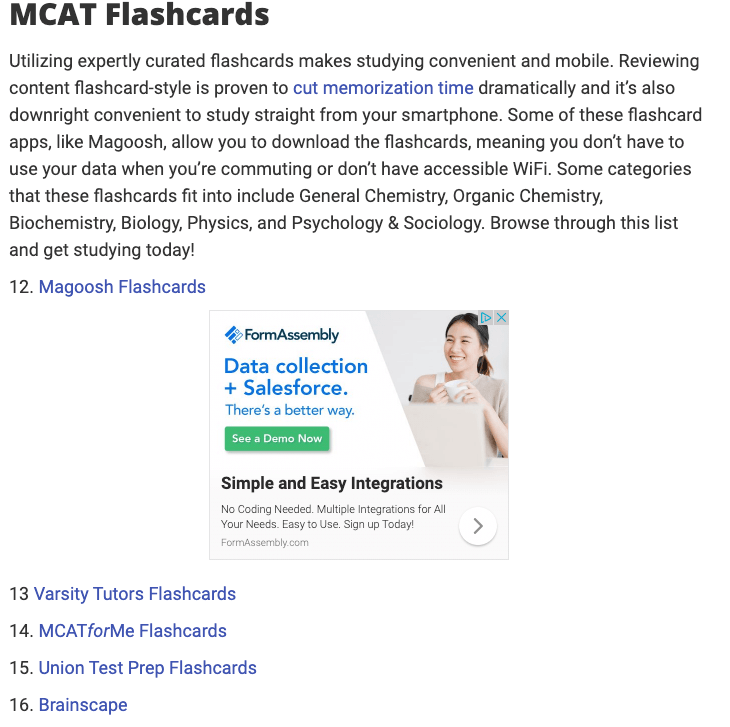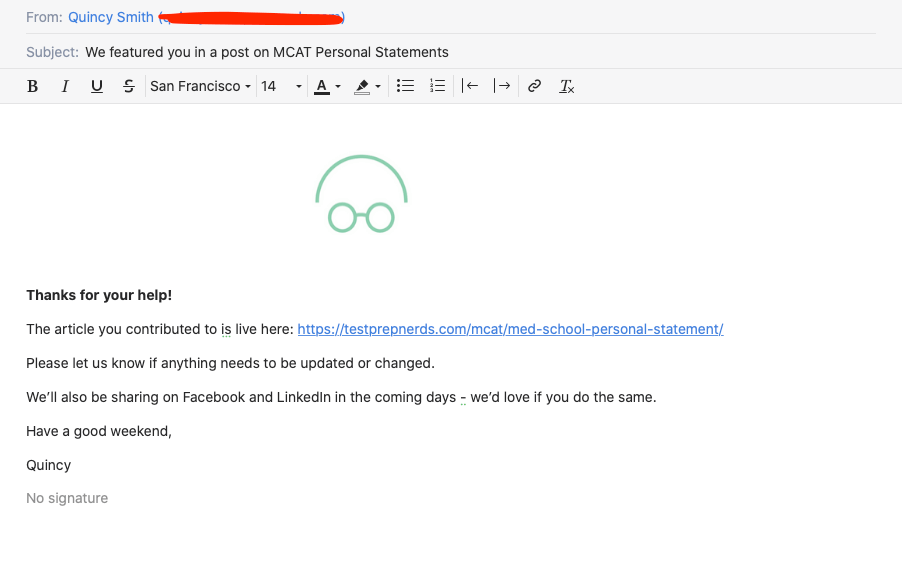The benefits of HARO are not new to marketers but most users are not leveraging the full value of the platform.
This guide will explore how to move beyond using HARO for link building to how to use it to help with content production, improvement, and promotion.
Contents
What is HARO?
Help a Reporter Out, or HARO, is a free online platform that originated as a tool for reporters looking for sources.
The platform works two ways – reporters are able to submit questions (known as queries) to HARO users and those users are able to submit answers in hopes of being featured in a story, blog post or interview.

The platform has evolved over the years and users are now able to categorise their questions, making it really easy for companies to cut through the noise when you consider how many queries get submitted every day.

How Most Companies Use HARO
Most companies utilise HARO as a PR and link building tool – they treat it as a numbers game and contribute regularly in hopes of earning publicity and links in places like Forbes, USA Today, and Technopedia.
There is absolutely nothing wrong with this approach – we’ve used it ourselves with great success and it’s a great tactic for building your domain strength, referral traffic, and brand recognition.

The issue is that’s where HARO stops for most companies – they only use one side of this incredible platform when the query submission side holds incredible potential from a content marketing perspective.
Getting More Out of HARO
In addition to link building, we now use HARO regularly to support our content efforts in three ways:
- Adding depth to new content
- Improving old content
- Promoting content
This guide will provide an in-depth look at each of these, including how our processes work as well as what we’ve learned over time.
HARO for Link Building
Before we get into the nuts and bolts of using HARO for content, I do want to pay homage to the platform as a means to build links.
The reality is that this is how the majority of companies start and will continue to use the service and there are some incredible resources out there showing how effective it can be:
- Authority Hackers on the role HARO links played in helping them build the authority of site they later sold for 6 figures
- SaaS company Chanty on their process for landing HARO links
- A Reddit thread on how to craft the perfect HARO pitch
The point is that it’s ok to use HARO just for links – it works and is a great skill to build into your marketing processes and routines.
However, the rest of this post is going to be dedicated to breaking down how we use HARO to augment our content efforts – let’s dig in!
HARO for New Content
Some pieces of content are significantly improved with first-person quotes and experiences.
A perfect example of this is our blog post on personal statements for medical school – our content research showed that most ranking pages only created a list of tips without input from real students or advisors.
Our plan was to use HARO to help produce advice from real people currently involved in the process. In theory, this would create a superior piece of content as not only would the advice be derived from real people, but we’d have unique quotes to support each tip.
To start, we created a very specific HARO query asking for help from people who had attended med school, were planning on attending med school, or who served as an advisor in some capacity.
My advice here is to either ask a single question or be obvious about breaking it up and hope respondents segment their pitches in kind.
We received 35 pitches to this query and promptly broke them out in a Google Sheet by contact info, responses, and category.
We did our best to break up the responses into columns for each question and determined the category by reading through them all and identifying similarities in each pitch. These categories then became the actual referral tips and were supported by the corresponding quotes.

These pitches then get passed to the writer as part of our content brief and they are responsible for choosing which quotes to use and which to ignore.
One thing we do ask them to do is verify that the website looks legitimate before including the quote – you will receive pitches from a variety of companies and not all of them will be a good fit.
The final component of using HARO for content is notifying the users whose quote you included. This isn’t required but is good etiquette and great for relationship building which you can leverage in generating more responses to future queries (more on this later!).
HARO for existing content
Millions of pieces of content get published every day and in order to stay relevant, most blogs are going to want to review their content at least once per year.
The benefits of content audits are well known and we aim to review all of our content at six-month intervals.
When we identify content that can be improved, one of the first things we look at is whether or not the article can be enriched by HARO contributions. A good example of this is our post on MCAT resources – this topic is strategically valuable to us but we weren’t getting much traction with our first iteration.
We took the same approach here as we did with a yet-to-be-written topic: we found out how first-hand tips could make this post better and crafted a detailed pitch asking for help identifying resources we may have missed.
The result was 25 responses and a much more comprehensive list of companies, guides, and tools available to students considering the MCAT.

When it comes to using HARO for existing content you really can’t do anything without the content audit component.
In our case, we realised we had a great opportunity to showcase first-hand recommendations but only arrived at that decision after considering the following:
- Keywords we had originally targeted but not addressed thoroughly enough – how can we better meet search intent here?
- Keywords we didn’t even consider but were now getting impressions for – how can we better target them?
- Reevaluating the competition – did we miss something that other sites are doing that would help us stand out?
Finally, the post in question needs to be a good candidate for HARO.
Our general rule of thumb here is that the further you get down the funnel the harder it will be to get meaningful responses.
For example, this post on the Facebook Pixel would not be a good option because of the knowledge needed to contribute something useful.
However, the post on marketing metrics is perfect as anyone can list their favourite and why they find it valuable.

HARO for Content Promotion
In the world of SEO, content promotion is an all-too-overlooked means of driving traffic quickly.
When it comes to HARO-enriched posts, the easiest place to start is by enlisting the same people whose quotes you’re using.
The concept is simple – you want to reach out to each pitch author and (1) thank them for contributing and (2) ask them to share the final result.
Our current process looks like this: we keep a master list of all respondents in our email software and add two separate tags, one if they submitted a response and an additional one if it was included in the post.

Once the post goes live, we reach out to the latter group with an email like this:

While responses to these emails are almost always positive, we are working to make it easier for contributors to share the blog with their audiences.
We’re currently working out the best way to collect social handles to make it easier to tag everyone in our social posts:

A few tips when it comes to leveraging contributors for help with promotion:
- Be flexible – people will want names changed, links updated, and quotes adjusted – handling all of these in a quick manner will make it more likely they share the end result.
- Be gracious – while HARO benefits both parties, making a point to thank responders for their help is a classy move.
- Ask for help with sharing – if you don’t make it clear that you’d love them to share the post then you can’t be surprised when they don’t do anything!
Additional HARO Tips
It’s important to be flexible with how you use HARO – we’ve found the best success with treating it like a framework as we test out different ways to structure queries, collect useful pitches, and interact with responders.
Reach out to former responders for new queries
Databox and G2 are the kings of this – they use HARO heavily for their content initiatives and always make sure to reach out to previous respondents to see if they’d like to contribute to upcoming posts.

By doing this you not only increase the number of responses you’re likely to get, but you also build a relationship with the experts in your field.
Develop Processes to Help You Stay Organised
Despite its usefulness, HARO is not a feature-rich platform and it’s easy to get frustrated when faced with dozens of responses across multiple queries.
The biggest issue is that HARO doesn’t allow you to export query responses so you’re faced with either trying to manage everything in the platform or copying responses over to Google Sheets one by one.
We opted for the latter in an effort to maintain our sanity and now copy over every response once the query has expired.
We do our best to match Google Sheet columns with details like name, email, company, URL, and response and then get to work evaluating and categorising everything.
All of the responses then get tagged in our ESP, passed to our writer, and then tagged with the ‘Featured’ tag once the piece has been completed.
Don’t Abuse the Emails
HARO doesn’t work without email addresses and you’ll likely have access to hundreds of them in very little time.
Our position has always been to ensure messages to these emails only relate to HARO – we let them know if they’ve been featured and occasionally invite them to submit another pitch.
That’s it.
The laws on unsolicited emails vary by country so I can only say how annoying it is to be on the receiving end of a cold email because of a HARO pitch I submitted. This list is an asset and it can significantly enhance your future content when used correctly.
Where to Start
If you’ve never used HARO before, there’s a real risk of you reading this guide and trying to do too much at one time. To mitigate the risk of becoming a master of none, let’s look at a few scenarios on how to get value out of the platform:
- You’ve never used HARO but are ready to try: in this case, I’d recommend signing up and only contributing in order to build links. Try and submit one response per day for at least a month so you can get a feel for how everything works and what makes a good query and response.
- You’ve used HARO for links before but never for content: look at your content calendar and identify one upcoming topic that can be improved with first-hand quotes. Write a detailed query and work on documenting your processes to handle the responses.
- You’ve used HARO for links and new content before: if this is you then work on auditing your content regularly and make sure to note if a piece of content can benefit from a HARO update. Not everything will qualify but if you’ve already been using it for new content then the best opportunities should be obvious.
Good luck!
- About the Author...





